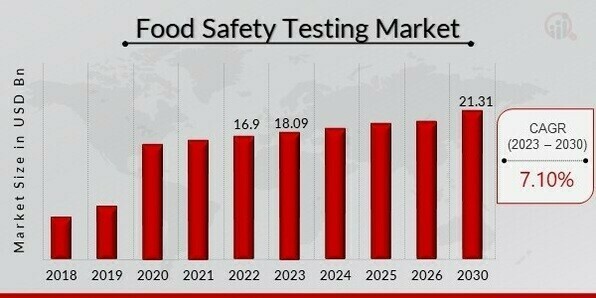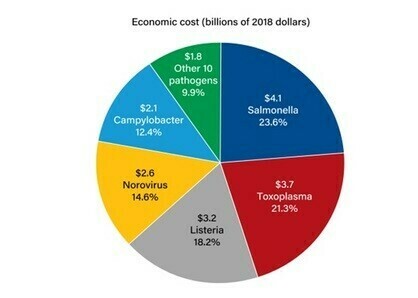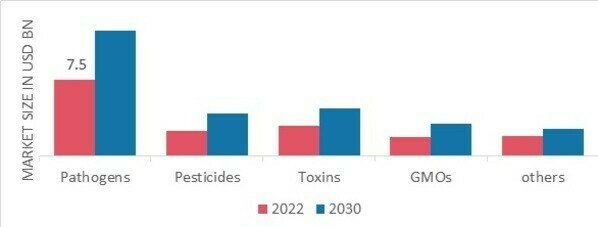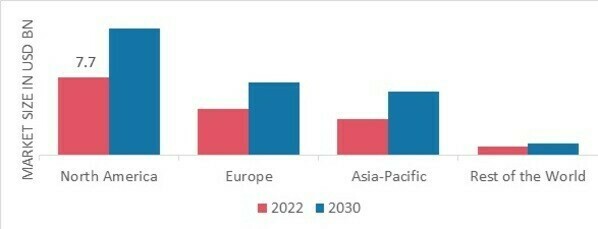Certified Global Research Member


Key Questions Answered
- Global Market Outlook
- In-depth analysis of global and regional trends
- Analyze and identify the major players in the market, their market share, key developments, etc.
- To understand the capability of the major players based on products offered, financials, and strategies.
- Identify disrupting products, companies, and trends.
- To identify opportunities in the market.
- Analyze the key challenges in the market.
- Analyze the regional penetration of players, products, and services in the market.
- Comparison of major players’ financial performance.
- Evaluate strategies adopted by major players.
- Recommendations
Why Choose Market Research Future?
- Vigorous research methodologies for specific market.
- Knowledge partners across the globe
- Large network of partner consultants.
- Ever-increasing/ Escalating data base with quarterly monitoring of various markets
- Trusted by fortune 500 companies/startups/ universities/organizations
- Large database of 5000+ markets reports.
- Effective and prompt pre- and post-sales support.
Global Food Safety Testing Market Overview
Food Safety Testing Market Size was valued at USD 16.9 billion in 2022. The Food Safety Testing industry is projected to grow from USD 18.09 Billion in 2023 to USD 21.31 billion by 2030, exhibiting a compound annual growth rate (CAGR) of 7.10% during the forecast period (2023 - 2030). Increasing cases of foodborne illness and growing consumer awareness regarding food safety are the key market drivers enhancing the market growth.

Source: Secondary Research, Primary Research, MRFR Database, and Analyst Review
Food Safety Testing Market Trends
- Growing concern regarding food-borne illness to aid the market growth
Foodborne illnesses are a major public health concern that significantly affects trade, development, and travel. Foodborne illnesses are conditions brought on by consuming contaminated food. Over 250 foodborne hazards, such as infectious bacteria, viruses, parasites, and noninfectious chemicals and toxins, have been identified. Although many of these agents frequently result in diarrhea and vomiting, not all foodborne illnesses have a single clinical syndrome. These agents can be added accidentally (or on purpose) during food production, processing, or preparation, or they can be an inherent component of the food. In addition, the majority of foodborne illnesses can spread through water or contact with infected people, pets, or other animals in addition to food. Only a few foodborne diseases are transmitted solely through foods, so the percentage of illnesses linked to foodborne agents varies depending on the agent and how the food is handled. According to the World Health Organization, unsafe food worldwide causes 420 000 fatalities and 600 million foodborne illnesses annually. Children under five account for 30% of deaths from foodborne illnesses. According to the World Health Organization, eating unsafe food annually results in the loss of 33 million healthy years of life worldwide.
Figure 1: Pathogens causing most food borne illness cost in the United States Source: Secondary Research, Primary Research, MRFR Database, and Analyst Review
Source: Secondary Research, Primary Research, MRFR Database, and Analyst Review
Additionally, the Economic Research Service (ERS) estimates that foodborne illnesses caused by pathogens such as Salmonella, Listeria monocytogenes, Toxoplasma gondii, Norovirus, and Campylobacter cost USD 15.5 billion annually in the United States. Due to the consequences of food poisoning, which can include illness and even premature death, there is a tremendous economic burden associated with medical costs as well as the production loss caused by workers being unable to work.
Advances in allergy-free products are being made worldwide due to consumers' growing intolerance to allergens like gluten and dairy. As a result, manufacturers frequently test packaged and processed food products for allergens and trace particles. This has led to the introduction of allergy-free products. Due to businesses operating ly testing organic products for evidence of listed or banned chemicals to comply with various country-level regulatory agencies, chemical testing in organic products is becoming increasingly popular in the market. For instance, the European Union lists more than 500 chemicals and dangerous substances that must be eliminated from organic products before they are shipped to European nations. This has enhanced the Food Safety Testing market CAGR across the globe.
Moreover, the scenario for food safety testing has expanded as a result of improved surveillance and detection techniques. By enforcing a strict food safety policy, the food manufacturers seek comprehensive oversight over the entire value chain, another factor propelling the growth of the Food Safety Testing market revenue.
Food Safety Testing Market Segment Insights
Food Safety Testing Contaminant Insights
The food safety testing market segmentation, based on contaminants, includes pathogens, pesticides, toxins, GMOs, and others. The pathogens segment held the majority share in 2022 in the Food Safety Testing market revenue. Foodborne illnesses are becoming more common due to various factors, including improper handling, undercooking, and unhygienic food storage conditions. Over the forecast period, segment growth is expected to be aided by the growing demand for proper food preparation and handling techniques to lower the risk of contamination. Moreover, the Genetically Modified Organisms (GMOs) segment is anticipated to experience the fastest CAGR growth during the estimated period.
Food Safety Testing Technology Insights
The Food Safety Testing market segmentation, based on technology, includes met Traditional and Rapid. The rapid segment dominated the market in 2022 and is projected to be the faster-growing segment during the forecast period, 2022-2030. Factors like the ability to perform multi-functional testing in a shorter time account for most of this market share. A rising number of foodborne illnesses, including viruses and other microbiological contaminants, due to poor storage conditions; and unsanitary methods of handling food propel the segmental growth. Additionally, due to its superior ability to test for a variety of contaminants when compared to conventional technology, this market growth is anticipated to expand at the fastest CAGR during the forecast period.
Food Safety Testing Food Type Insights
The Food Safety Testing market data has been bifurcated by Food Type into meat, poultry, seafood products, dairy products, cereals & grains, processed food, fruits & vegetables, and others. The meat, poultry, and seafood products segment dominated the market in 2022 and is projected to be the faster-growing segment during the forecast period, 2022-2030. The market’s growth has been fueled by rising food-related illnesses like food poisoning, nausea, and diarrhea, as well as increased awareness of the health benefits of food. In addition, the market is anticipated to grow over the forecast period due to rising consumer demand for testing for pesticide residue and other contaminants in fruits and vegetables and the expansion of the international fruit and vegetable trade.
April 2022: IVRI intends to introduce the kit to consumers. Since each strip will only cost $5 to $6, if not less, the kit is very affordable. A paper strip with plant dye on it makes up the kit. The kit must be placed on the meat's surface or inside a packet to inspect the meat's quality. This launch is further expected to broaden the growth opportunity for the Food Safety Testing industry.
Figure 2: Food Safety Testing Market, by Food Type, 2022 & 2030 (USD billion) Source: Secondary Research, Primary Research, MRFR Database and Analyst Review
Source: Secondary Research, Primary Research, MRFR Database and Analyst Review
Food Safety Testing Regional Insights
By Region, the study provides market insights into North America, Europe, Asia-Pacific, and the Rest of the World. The North America, Food Safety Testing market accounted for USD 7.7 billion in 2022 and is expected to exhibit a significant CAGR growth during the study period. Technology advancements increased health benefits awareness, and increased food safety awareness is one factor contributing to this Region's market growth. The regional market for food safety testing is expanding due to the constantly evolving lifestyle. Government support for new product development, food safety inspections, and a wide range of specialty health products are the main factors boosting regional market growth.
Further, the major countries studied in the market report are: The U.S., Canada, Germany, France, the UK, Italy, Spain, China, Japan, India, Australia, South Korea, and Brazil.
Figure 3: FOOD SAFETY TESTING MARKET SHARE BY REGION 2022 (%) Source: Secondary Research, Primary Research, MRFR Database, and Analyst Review
Source: Secondary Research, Primary Research, MRFR Database, and Analyst Review
Europe Food Safety Testing market accounts for the second-largest market share. Due to growing concerns across Europe, food safety is a significant problem. As a result, several policies have been put in place to protect the public. Control laboratories, national reference laboratories, and EU reference laboratories all monitor Europe's food safety regulations. These agencies are concerned with preserving consumer health by ensuring food quality throughout the supply chain. The assessment and dissemination of risks related to food contamination are tasks carried out by the European Food Safety Authority (EFSA). Concerns about the outbreak of foodborne illnesses brought on by pathogens in imported meat and poultry products have prompted Italy, the second-largest exporter of pasta in the world and the largest exporter of chocolate, to implement strict regulations. Further, the Germany Food Safety Testing market held the largest market share, and the UK Food Safety Testing market was the fastest-growing market in the European Region.
The Asia-Pacific Food Safety Testing Market is expected to grow at the fastest CAGR from 2022 to 2030. Some main market drivers include increasing product demand, higher living standards, greater awareness of health issues, and a large population. The Region's food safety testing businesses are also concentrating on offering a range of cutting-edge safety testing methods. Moreover, the China Food Safety Testing market held the largest market share, and the India Food Safety Testing market was the fastest-growing market in the Asia-Pacific region.
Food Safety Testing Key Market Players & Competitive Insights
Major market players are investing a lot of money in R&D to expand their product portfolios, which will spur further growth in the food safety testing market. With significant market developments like new product launches, contractual agreements, mergers and acquisitions, increased investments, and collaboration with other organizations, market participants are also undertaking various strategic initiatives to expand their footprint. Cost-effective testing solutions are necessary for companies in the food safety testing industry if they want to grow and thrive in a market that is becoming more and more competitive.
One of the primary business strategies manufacturers adopt in the Food Safety Testing industry is launching technologically advanced food testing kits. In recent years, the Food Safety Testing industry has raised investments, and many start-ups are entering the market. The Food Safety Testing markets major player such as SGS SA (Switzerland), Microbac Laboratories Inc. (US), Eurofins Scientific (Luxembourg), Bureau Veritas (US), Intertek Group plc (UK), ALS Limited (Australia), AsureQuality Ltd. (New Zealand), Neogen Corporation (US), TÜV SÜD (Germany), and ADPEN Laboratories Inc. (US), and others are working on expanding the market demand by investing in research and development activities.
Eurofins Scientific is a leader in food, environmental, pharmaceutical product testing, and CRO services for agriscience. Additionally, it is a market leader in testing and laboratory services for forensics, advanced material sciences, discovery pharmacology, genomics, and supporting clinical studies. In August 2022, Eurofins Scientific announced signing an agreement to acquire QSAI Analysis and Research Center Co., Ltd. ("QARC").
Bureau Veritas is a leader in laboratory testing, inspection, and certification services. The Group was founded in 1828 and now employs nearly 80,000 people in close to 1,600 offices and laboratories worldwide. In May 2022, In Winnipeg, Manitoba, Bureau Veritas announced the opening of its fifth Canadian Microbiology Laboratory. The new lab will provide indicators (Generic E. coli/Coliforms, Total Plate Count, Yeast & Mold) and rapid pathogen testing (E. coli O157:H7, Salmonella & Listeria).
Key Companies in the Food Safety Testing market includes
- SGS SA (Switzerland)
- Microbac Laboratories Inc. (US)
- Eurofins Scientific (Luxembourg)
- Bureau Veritas (US)
- Intertek Group plc (UK)
- ALS Limited (Australia)
- AsureQuality Ltd. (New Zealand)
- Neogen Corporation (US)
- TÜV SÜD (Germany)
- ADPEN Laboratories Inc. (US), among others
Food Safety Testing Industry Developments
April 2022: The UT Health Department opened a mobile food testing laboratory in Chandigarh. To assess the quality of the food products, this mobile lab will travel to the city and collect food samples.
November 2022: The Balochistan Food Authority (BFA) has received a mobile food-testing lab from the European Union to help ensure that food, mainly processed food, is free of contamination, accurately labeled, and complies with applicable safety standards.
Food Safety Testing Market Segmentation
Food Safety Testing Technology Outlook
- Pathogens
- Pesticides
- Toxins
- GMOs
- Others
Food Safety Testing Technology Outlook
- Traditional
- Rapid
Food Safety Testing Food Type Outlook
- Meat
- Poultry
- Seafood Products
- Dairy Products
- Cereals & Grains
- Processed Food
- Fruits & Vegetables
- Others
Food Safety Testing Regional Outlook
-
North America- US
- Canada
-
Europe- Germany
- France
- UK
- Italy
- Spain
- Rest of Europe
-
Asia-Pacific- China
- Japan
- India
- Australia
- South Korea
- Australia
- Rest of Asia-Pacific
-
Rest of the World- Middle East
- Africa
- Latin America
Leading companies partner with us for data-driven Insights
Kindly complete the form below to receive a free sample of this Report
Tailored for You
- Dedicated Research on any specifics segment or region.
- Focused Research on specific players in the market.
- Custom Report based only on your requirements.
- Flexibility to add or subtract any chapter in the study.
- Historic data from 2014 and forecasts outlook till 2040.
- Flexibility of providing data/insights in formats (PDF, PPT, Excel).
- Provide cross segmentation in applicable scenario/markets.





















